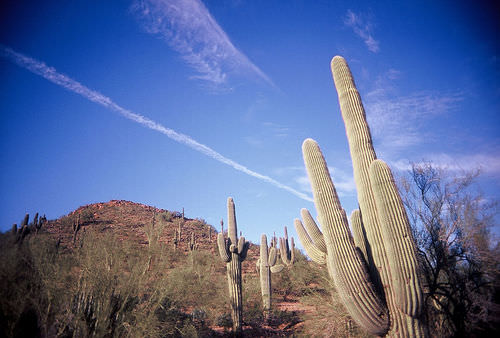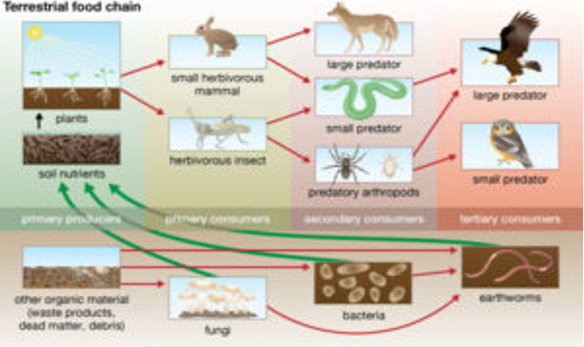At any given period we find ourselves amidst nature, which includes a wide variety of things such as rivers, mountains, plants, and animals. All these living and non-living organisms have a way of collaboration between them for their survival.
Therefore in an ecosystem, living organisms interact among themselves and with the physical environment. There are different types of ecosystems, for instance, the biosphere.
Components of Ecosystem.
The components of an ecosystem are mainly the biotic components and the abiotic components, which are usually in constant communication with each other.
Biotic Components of Ecosystem
Biotic components of an ecosystem are the living things in it. These include animals and plants in addition to bacteria and fungi. Based on the energy requirement source, these biotic components are further divided into three broad categories; producers, decomposers, and consumers.
Producers
The producer component of an ecosystem is made up of plants. These plants generate their energy through a process called photosynthesis, which requires sunlight and chlorophyll. It is important to note that all other living organisms depend on plants for their energy requirement of oxygen and food.

Consumers
Consumers comprise of carnivores (eat meat) for instance lion, herbivores (eat vegetables) for example giraffe and omnivores (eat both meat and vegetables) for example, man.

Decomposers
These are the bacteria and fungi collectively referred to as saprophytes. They convert decaying organic matter into nitrogen and carbon dioxide by feeding on it. This is a vital role in the recycling of nutrients, thus providing a constant flow of energy whereby the producers use the recycled components once again.
Abiotic components of Ecosystem
These are the non-living things in a given ecosystem. Abiotic components are made up of physical and the chemical factors that impact the lives of living organisms. The other term for abiotic components is the ecological factors.
The environment is characterized by physical and chemical factors such as soil, air, light, nutrients, etc. These physical and chemical factors vary from ecosystem to ecosystem. For instance, in an aquatic ecosystem, the abiotic factors are sunlight, pH of water, water depth, turbidity, salinity, nutrients, and dissolved oxygen. On the other hand, terrestrial ecosystems are comprised of temperature, soil type, altitude, wind nutrients, and sunlight.
Conclusion.
The sun is the energy source for plants which through photosynthesis in the presence of sunlight with the availability of carbon dioxide and chlorophyll form energy. This energy undergoes several chemical reactions to turn into chemical energy.
The herbivores depend on plants to obtain their energy. In turn, the carnivores eat the herbivores and other fellow carnivores. Micro-organisms then decompose any dead and decaying matter putting energy back in the cycle.
Whenever one factor is removed or changed, an ecosystem is affected.